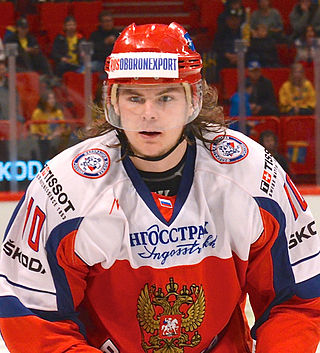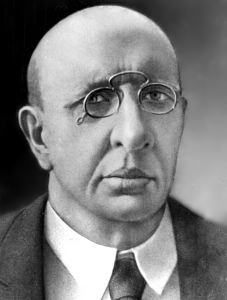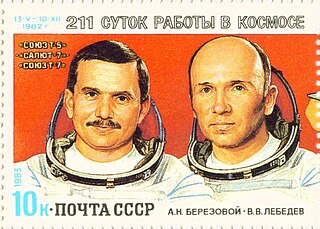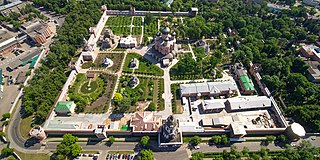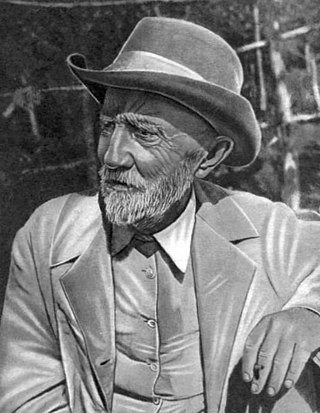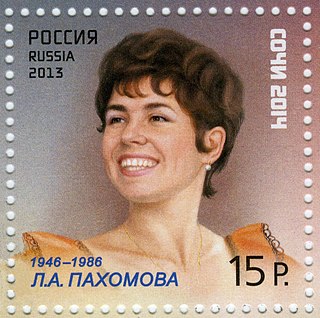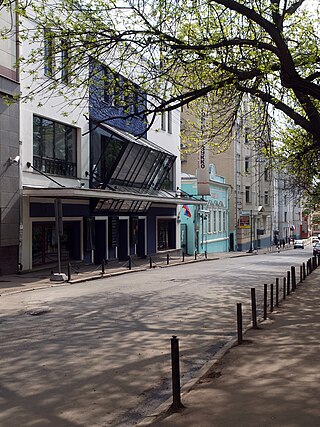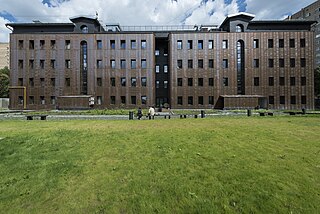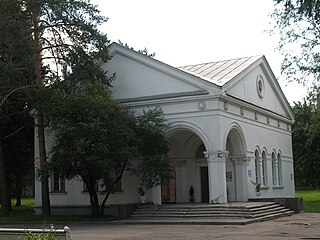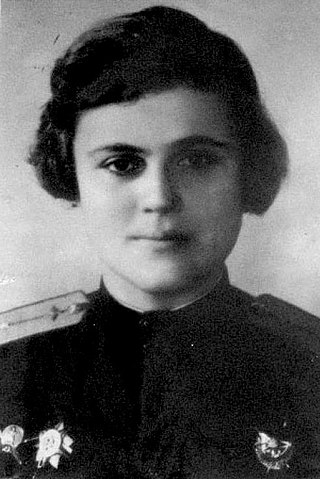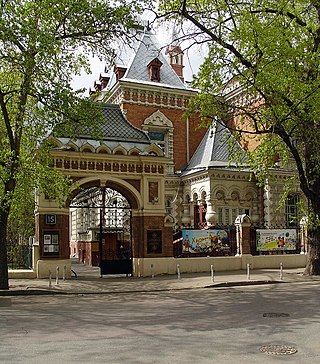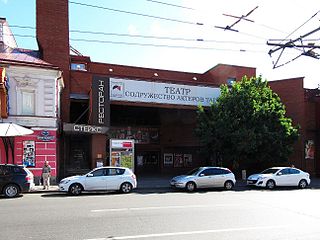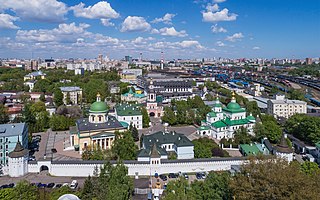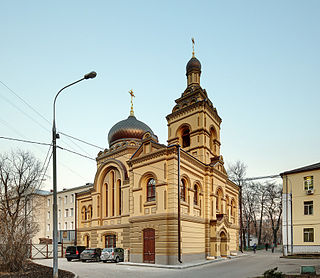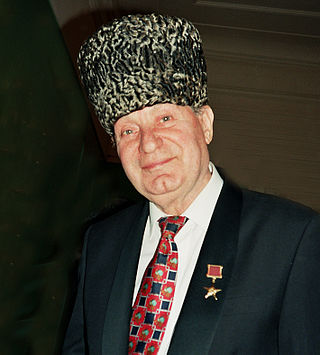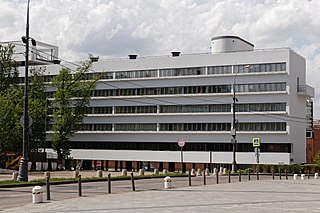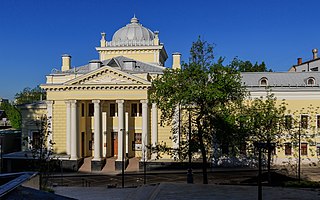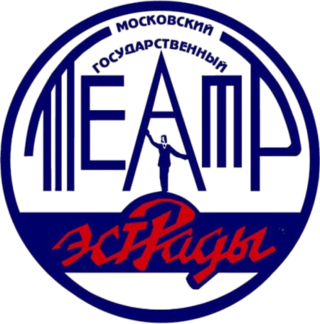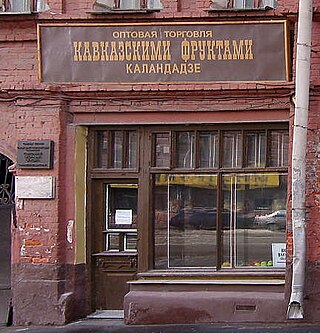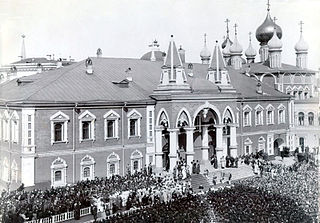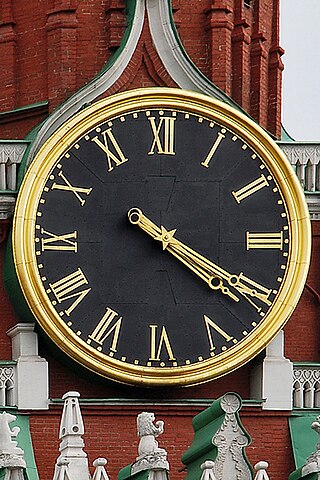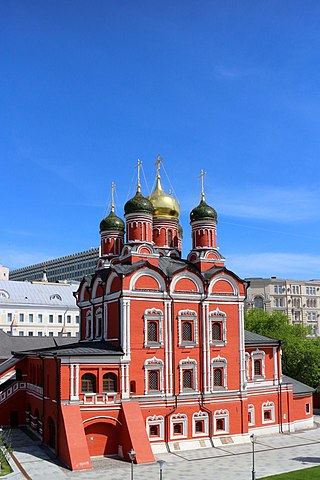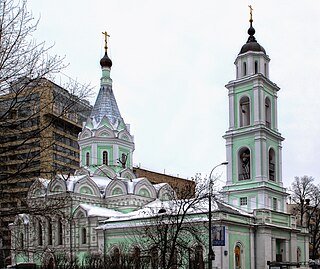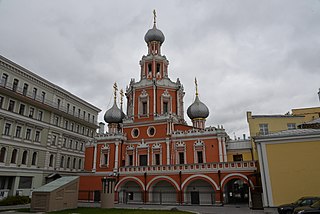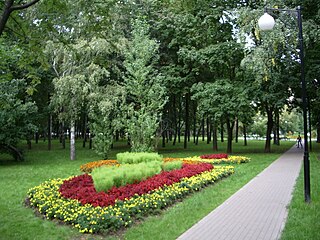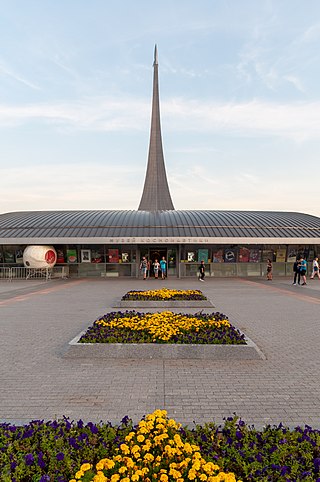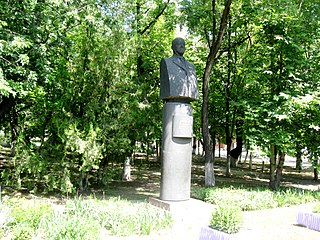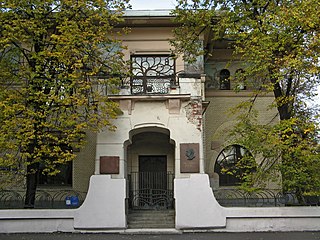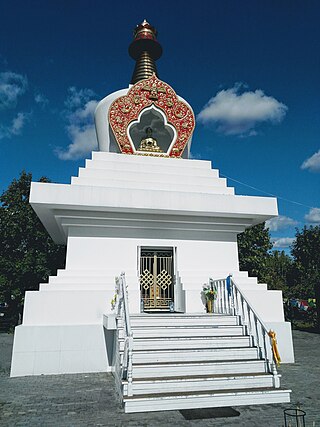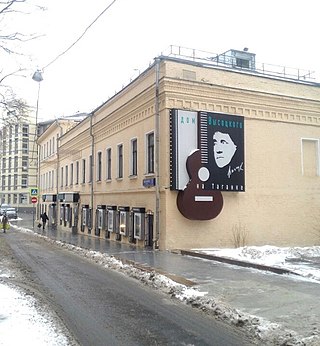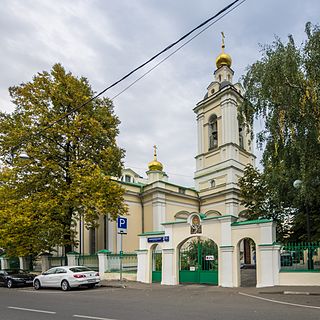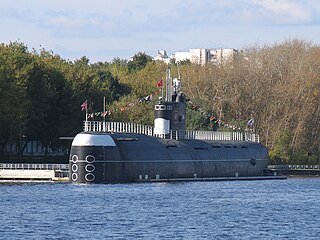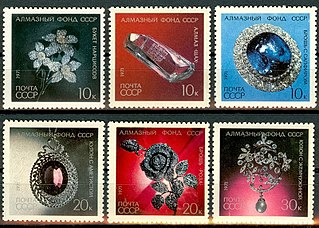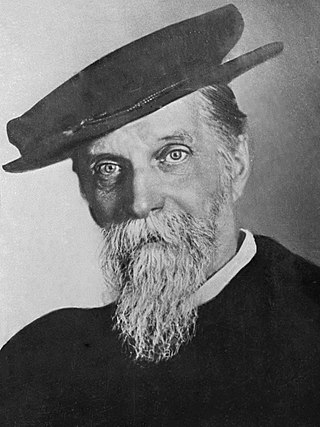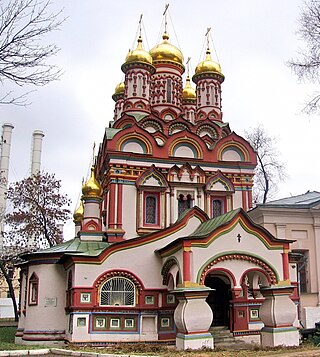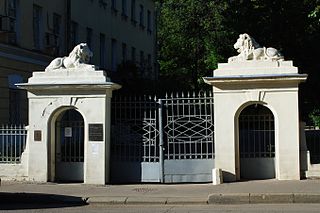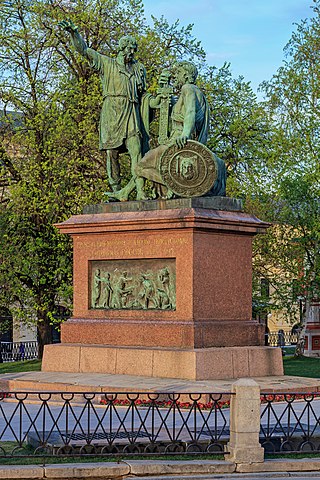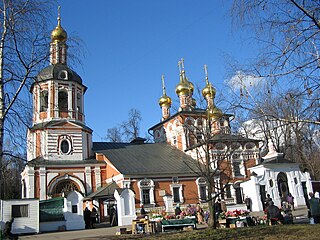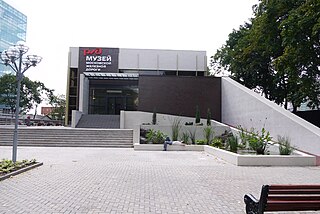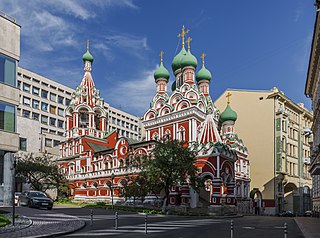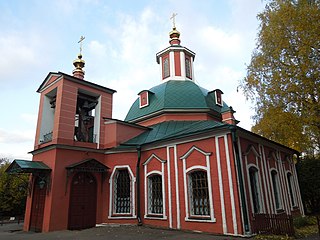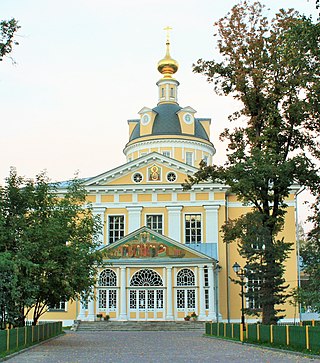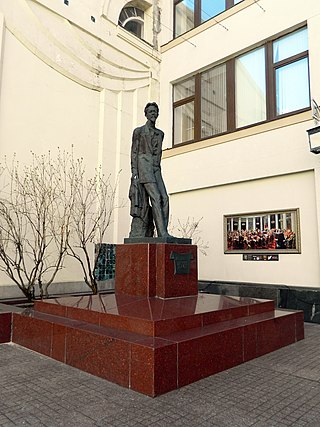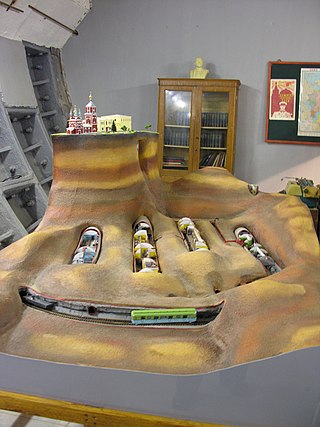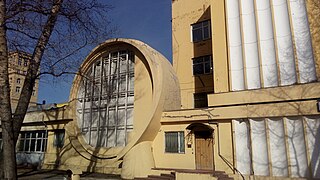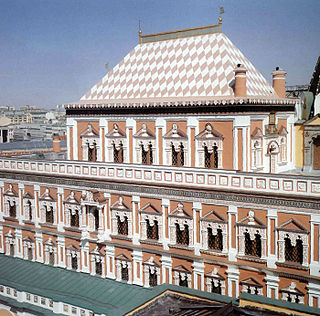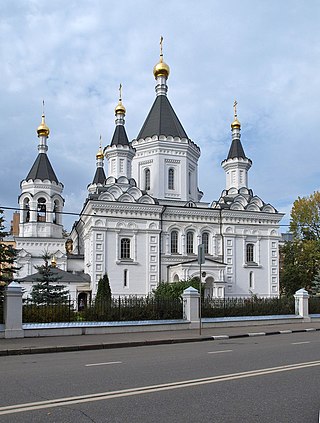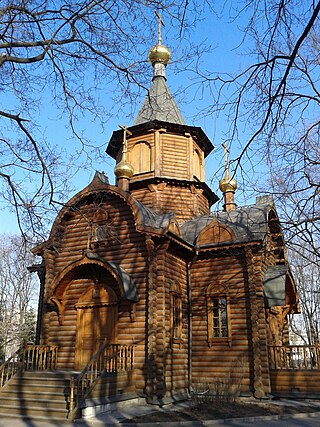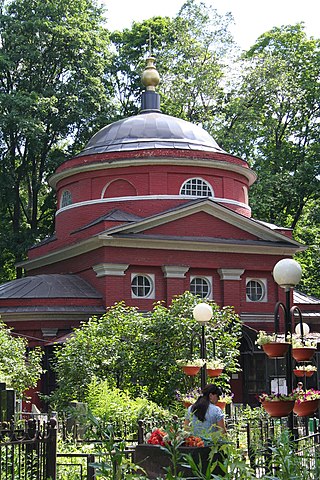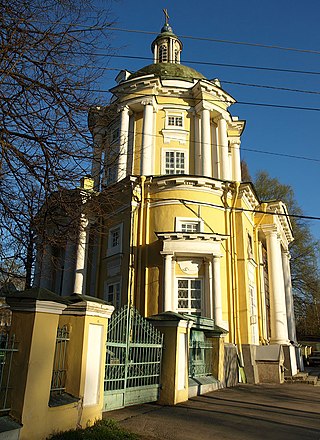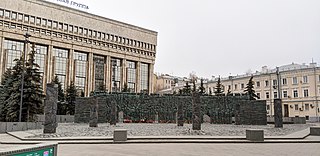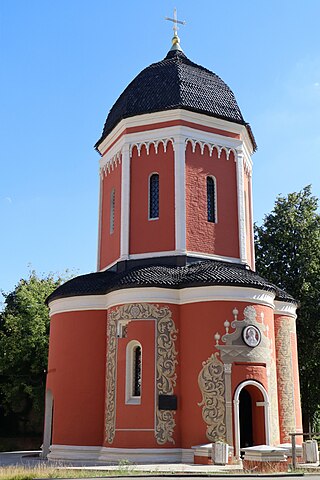100 Sights in Moscow, Russia (with Map and Images)
Legend
Premium Sights
Book tickets, guided tours and activities in Moscow.
Guided Free Walking Tours
Book free guided walking tours in Moscow.
Welcome to your journey through the most beautiful sights in Moscow, Russia! Whether you want to discover the city's historical treasures or experience its modern highlights, you'll find everything your heart desires here. Be inspired by our selection and plan your unforgettable adventure in Moscow. Dive into the diversity of this fascinating city and discover everything it has to offer.
Sightseeing Tours in MoscowActivities in Moscow1. MOST
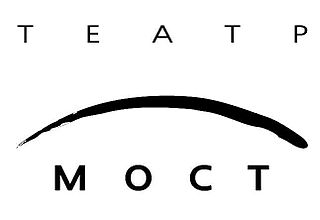
The MOST Theater is a state budgetary institution of culture in the city of Moscow. It was created on the basis of the Student Theater of Moscow State University in 1999 by a decree of the Moscow Government at the request of the All-Russian Theater Society, in fact, it began to work in June 2000.
2. Ф. М. Достоевскому
Fyodor Mikhailovich Dostoevsky, sometimes transliterated as Dostoyevsky, was a Russian novelist, short story writer, essayist and journalist. Numerous literary critics regard him as one of the greatest novelists in all of world literature, as many of his works are considered highly influential masterpieces. Dostoevsky's literary works explore the human condition in the troubled political, social, and spiritual atmospheres of 19th-century Russia, and engage with a variety of philosophical and religious themes. His most acclaimed novels include Crime and Punishment (1866), The Idiot (1869), Demons (1872), The Adolescent (1875), and The Brothers Karamazov (1880). His 1864 novella Notes from Underground is considered to be one of the first works of existentialist literature.
3. Конфуцию
Confucius, born Kong Qiu (孔丘), was a Chinese philosopher of the Spring and Autumn period who is traditionally considered the paragon of Chinese sages. Much of the shared cultural heritage of the Sinosphere originates in the philosophy and teachings of Confucius. His philosophical teachings, called Confucianism, emphasized personal and governmental morality, harmonious social relationships, righteousness, kindness, sincerity, and a ruler's responsibilities to lead by virtue.
4. Alexei Anatolyevich Navalny
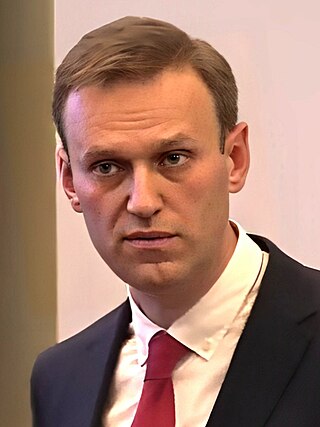
Alexei Anatolyevich Navalny was a Russian opposition leader, anti-corruption activist and political prisoner. He founded the Anti-Corruption Foundation (FBK) in 2011. He was recognised by Amnesty International as a prisoner of conscience and was awarded the Sakharov Prize for his work on human rights.
5. Т-72
The T-72 is a family of Soviet main battle tanks that entered production in 1973. The T-72 was a development based on the T-64 using thought and design of the previous Object 167M. About 25,000 T-72 tanks have been built, and refurbishment has enabled many to remain in service for decades. It has been widely exported and has seen service in 40 countries and in numerous conflicts. The Russian T-90 introduced in 1992 and the Chinese Type 99 are further developments of the T-72. Production and development of various modernized T-72 models continues today. Currently holds the record for the most MBT's lost in combat.
6. Х. Марти
José Julián Martí Pérez was a Cuban nationalist, poet, philosopher, essayist, journalist, translator, professor, and publisher, who is considered a Cuban national hero because of his role in the liberation of his country from Spain. He was also an important figure in Latin American literature. He was very politically active and is considered an important philosopher and political theorist. Through his writings and political activity, he became a symbol of Cuba's bid for independence from the Spanish Empire in the 19th century, and is referred to as the "Apostle of Cuban Independence". From adolescence on, he dedicated his life to the promotion of liberty, political independence for Cuba, and intellectual independence for all Spanish Americans; his death was used as a cry for Cuban independence from Spain by both the Cuban revolutionaries and those Cubans previously reluctant to start a revolt.
7. Лев Яшин
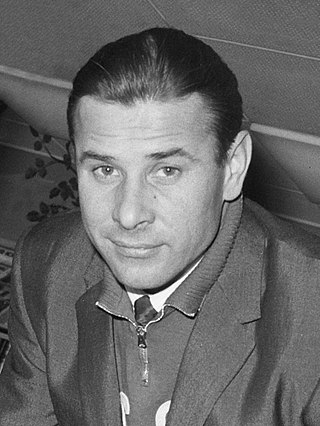
Lev Ivanovich Yashin was a Soviet professional footballer considered by many to be the greatest goalkeeper in the history of the sport. He was known for his athleticism, positioning, imposing presence in goal, and acrobatic reflex saves. He was also deputy chairman of the Football Federation of the Soviet Union.
8. Владимир Высоцкий
Vladimir Semyonovich Vysotsky was a Soviet singer-songwriter, poet, and actor who had an immense and enduring effect on Soviet culture. He became widely known for his unique singing style and for his lyrics, which featured social and political commentary in often-humorous street jargon. He was also a prominent stage- and screen-actor. Though the official Soviet cultural establishment largely ignored his work, he was remarkably popular during his lifetime and has exerted significant influence on many of Russia's musicians and actors.
9. В. В. Маяковскому
Vladimir Vladimirovich Mayakovsky was a Russian poet, playwright, artist, and actor. During his early, pre-Revolution period leading into 1917, Mayakovsky became renowned as a prominent figure of the Russian Futurist movement. He co-signed the Futurist manifesto, A Slap in the Face of Public Taste (1913), and wrote such poems as "A Cloud in Trousers" (1915) and "Backbone Flute" (1916). Mayakovsky produced a large and diverse body of work during the course of his career: he wrote poems, wrote and directed plays, appeared in films, edited the art journal LEF, and produced agitprop posters in support of the Communist Party during the Russian Civil War of 1917–1922.
10. Bolshoi Theatre
The Bolshoi Theatre is a historic opera house in Moscow, Russia, originally designed by architect Joseph Bové. Before the October Revolution it was a part of the Imperial Theatres of the Russian Empire along with Maly Theatre in Moscow and a few theatres in Saint Petersburg.
11. Сергей Есенин
Sergei Alexandrovich Yesenin, sometimes spelled as Esenin, was a Russian lyric poet. He is one of the most popular and well-known Russian poets of the 20th century. One of his narratives was "lyrical evocations of and nostalgia for the village life of his childhood – no idyll, presented in all its rawness, with an implied curse on urbanisation and industrialisation".
12. Catholic Cathedral of the Immaculate Conception
The Cathedral of the Immaculate Conception of the Holy Virgin Mary is a neo-Gothic Catholic church at Moscow's center, that serves as the cathedral of the Archdiocese of Moscow. Located in the Central Administrative Okrug, it is one of three Catholic churches in Moscow and the largest in Russia.
Wikipedia: Cathedral of the Immaculate Conception (Moscow) (EN), Website
13. Н. И. Вавилову
Nikolai Ivanovich Vavilov was a Russian and Soviet agronomist, botanist and geneticist who identified the centers of origin of cultivated plants. He devoted his life to the study and improvement of wheat, maize and other cereal crops that sustain the global population.
14. Jury Dolgoruky
The Statue of Yuriy Dolgorukiy is an equestrian statue which commemorates the founding of Moscow in 1147 by Yuriy Dolgorukiy. Dolgorukiy was the Grand Prince of the Kievan Rus' (Kiev) and a member of the Rurik dynasty. On 6 June 1954, the statue was erected on Soviet Square, located in front of the Mossoviet building. The sculptors were Sergei Mikhailovich Orlov, A. P. Antropov, and Nicholay Lvovich Shtamm. The architectural design was by Viktor Semenovich Andreyev. The statue replaced the Monument to the Soviet Constitution, which had been demolished in 1941.
15. Компьютерному вирусу Petya
Petya is a family of encrypting malware that was first discovered in 2016. The malware targets Microsoft Windows–based systems, infecting the master boot record to execute a payload that encrypts a hard drive's file system table and prevents Windows from booting. It subsequently demands that the users make a payment in Bitcoin in order to regain access to the system.
16. Могилы Мигули и Окуджавы
Bulat Shalvovich Okudzhava was a Soviet and Russian poet, writer, musician, novelist, and singer-songwriter of Georgian-Armenian ancestry. He was one of the founders of the Soviet genre called "author song", or "guitar song", and the author of about 200 songs, set to his own poetry. His songs are a mixture of Russian poetic and folk song traditions and the French chansonnier style represented by such contemporaries of Okudzhava as Georges Brassens. Though his songs were never overtly political, the freshness and independence of Okudzhava's artistic voice presented a subtle challenge to Soviet cultural authorities, who were thus hesitant for many years to give him official recognition.
17. Church of the Ascension
The Church of the Ascension of the Lord in Kolomenskoye is an Orthodox church in the Nagatinsky Zaton district of Moscow, in the former village of Kolomenskoye. It is a masterpiece of world architecture, the first stone tented temple in Russia.
18. усадьба Воронцово
The natural historical and architectural and recreational complex “The Harm of Vorontsovo”, better known as the “Vorontsovsky Park”-the recreation area and the green zone in the south-west of Moscow.
19. People's Friendship Fountain
The Druzhba Rodov fountain is the main fountain and one of the main symbols of VDNH. It was created for the opening of VDNKh in 1954 according to the project of Konstantin Topuridze and Grigory Konstantinovsky. It is located on the Central Alley, on the Friendship of Peoples Square, next to the Main Pavilion. The fountain has been closed for restoration since the beginning of autumn 2018, reopened in April 2019.
20. С. Е. Савицкой
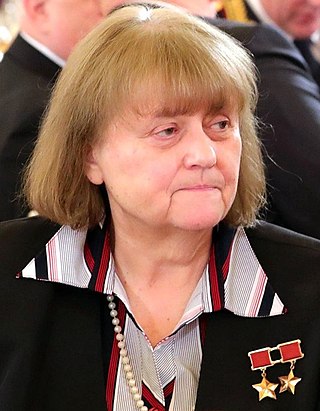
Svetlana Yevgenyevna Savitskaya is a Russian former aviator and Soviet cosmonaut who flew aboard Soyuz T-7 in 1982, becoming the second woman in space. On her 1984 Soyuz T-12 mission she became the first woman to fly to space twice, and the first woman to perform a spacewalk.
21. Tsar Cannon
The Tsar Cannon is a large early modern period artillery piece on display on the grounds of the Moscow Kremlin. It is a monument of Russian artillery casting art, cast in bronze in 1586 in Moscow, by the Russian master bronze caster Andrey Chokhov. Mostly of symbolic impact, it was never used in a war. However, the cannon bears traces of at least one firing. Per the Guinness Book of Records it is the largest bombard by caliber in the world, and it is a major tourist attraction in the ensemble of the Moscow Kremlin.
22. Museum of Vladimir Mayakovsky
The State Museum of Vladimir Mayakovsky is a museum-apartment of the poet Vladimir Mayakovsky, founded in 1937 on the initiative of Lilya Brik as a library-museum. Initially, it was located in Hendrikov Lane, where the poet lived with Lilya and Osip Brik from 1926 to 1930. On the afternoon of April 14, 1930, Mayakovsky committed suicide. In 1972, the museum was moved to a former communal apartment at number 12 on the 3rd floor in Lubyansky Passage, where it was completely rebuilt. In 1989, according to the project of museologist Taras Polyakov, the exposition was modernized in the constructivist style, a four-story exhibition space was created according to the project of architect A. V. Bokov, dedicated not only to the memory of the poet, but also to the Russian avant-garde.
Wikipedia: Государственный музей В. В. Маяковского (RU), Website
23. Worker and Kolkhoz Woman
Worker and Kolkhoz Woman is a sculpture of two figures with a sickle and a hammer raised over their heads. The concept and compositional design belong to the architect Boris Iofan. It is 24.5 metres (78 feet) high, made from stainless steel by Vera Mukhina for the 1937 World's Fair in Paris, and subsequently moved to Moscow. The sculpture is an example of socialist realism in an Art Deco aesthetic. The worker holds aloft a hammer and the kolkhoz woman a sickle to form the hammer and sickle symbol.
24. Moscow State Puppet Theatre
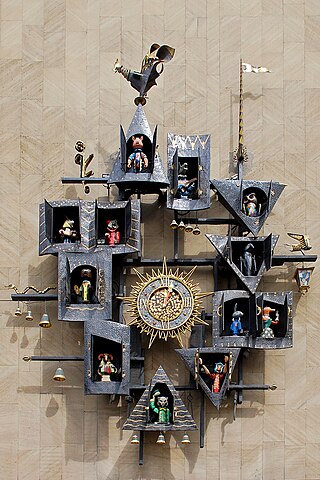
The State Academic Central Puppet Theater named after Sergei Vladimirovich Obraztsov (GATTC) is the world's largest puppet theater. It is located in Moscow in house No 3 on Sadovaya-Samotechnaya Street. He is a member of the International Union of Puppet Theater Workers UNIMA. The emblem of the theater is a hand with a ball on the index finger.
25. Андрей Миронов
Andrei Aleksandrovich Mironov was a Soviet and Russian stage and film actor who played lead roles in some of the most popular Soviet films, such as The Diamond Arm, Beware of the Car and Twelve Chairs. Mironov was also a popular singer.
26. Tsar Bell
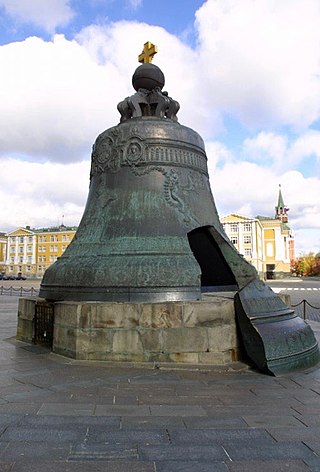
The Tsar Bell, also known as the Tsarsky Kolokol, Tsar Kolokol III, or Royal Bell, is a 6.14-metre-tall (20.1 ft), 6.6-metre-diameter (22 ft) bell on display on the grounds of the Moscow Kremlin. The bell was commissioned by Empress Anna Ivanovna, niece of Peter the Great.
27. Alexander Pushkin
The monument to Alexander Sergeevich Pushkin, the work of Alexander Mikhailovich Opekushin, was erected in Moscow on June 6 (18), 1880. The monument is made of bronze, originally it was installed at the beginning of Tverskoy Boulevard on Strastnaya Square. In 1950, the monument was moved to the opposite side of the square.
Wikipedia: Памятник А. С. Пушкину (Москва, Пушкинская площадь) (RU)
28. Театр на Юго-Западе
Theater in the South-West is a state theater in Moscow. It is located on Vernadsky Avenue. It was founded in 1977 by artistic director and director Valery Belyakovich. Since 2011, the artistic director of the theater is Oleg Leushin.
29. Московский государственный музей С. А. Есенина
The Moscow State Museum of Sergei Yesenin is a museum dedicated to the life and work of the poet Sergei Yesenin. It is located in house No 24 on Bolshoy Strochenovsky Lane, where the poet lived and was registered from 1911 to 1918. The building was badly damaged during a fire in 1992, but was rebuilt in 1994.
Wikipedia: Московский государственный музей С. А. Есенина (RU), Website
30. Gorky Museum
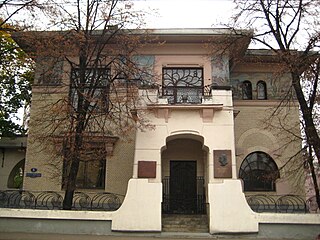
The Gorky Museum is an architectural landmark of the "Moderne" style, the Russian term for Art Nouveau. It was built in Moscow in 1900–02 by the architect Fyodor Schechtel. It is also known as the Ryabouchinsky House, for the young Russian industrialist and art collector who built it. After the Russian Revolution in 1917, the Ryabouchinsky family emigrated to France. In 1931 the Soviet government offered the house to the writer Maxim Gorky and his family. It was his home until his death in 1936. The widow of Gorky's son continued to live in the house until her death in 1965. It then became the Gorky Museum, dedicated to his life and work. It is located in the historic center of Moscow, at 6 Malaya Nikitskaya. Admission is free.
31. Виктор Тихонов
Viktor Vasilievich Tikhonov is a Russian former professional ice hockey forward. Tikhonov was originally selected 28th overall in the 2008 NHL Entry Draft, by the Phoenix Coyotes. After several years in the National Hockey League (NHL) with the Coyotes, Tikhonov moved to the Kontinental Hockey League (KHL) in Russia, where he spent four years with SKA St. Petersburg. In 2015, he returned to the NHL, signing a contract with the Chicago Blackhawks, appearing in 11 games for them before he was claimed on waivers by the Coyotes.
32. В. Р. Вильямсу
Vasiliy Robertovich Vilims-Russian and Soviet soil scientists, academician of the Academy of Sciences of the USSR (1931), Academy of Sciences of the BSSR (1929), vasculin (1935). One of the founders of agronomic soil science.
33. Музей кино
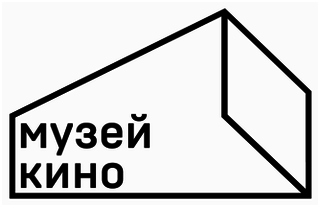
The State Central Museum of Cinema is a Russian state institution engaged in active educational and scientific activities in the field of film history and theory. It was founded in March 1989 on the basis of the reorganized Museum Department of the All-Union Bureau for the Promotion of Cinematography. From the moment of its opening until November 2005, the Museum of Cinema was located in the Cinema Center on Krasnaya Presnya, where collections reflecting the film culture of Russia throughout the history of its development were created, regular screenings of masterpieces of world cinema, lectures by film scholars, philosophers, critics, directors, festivals of Russian and foreign cinema, seminars on theoretical problems of cinema were held.
Wikipedia: Государственный центральный музей кино (RU), Vk, Facebook, Instagram, Website
34. Monument to the Conquerors of Space
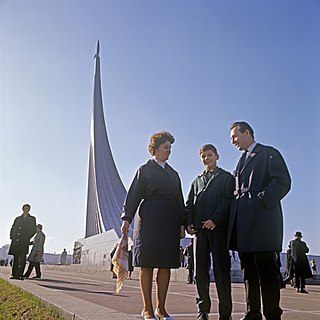
The Monument to the Conquerors of Space is a giant obelisk in Moscow built in 1964 to celebrate achievements of the Soviet people in space exploration. It depicts a starting rocket that rises on its exhaust plume.
35. В. В. Лебедеву
Valentin Vitalyevich Lebedev is a former Soviet cosmonaut who made two flights into space. His stay aboard the Space Station Salyut 7 with Anatoly Berezovoy in 1982, which lasted 211 days, was recorded in the Guinness Book of Records.
36. Игорь Тальков
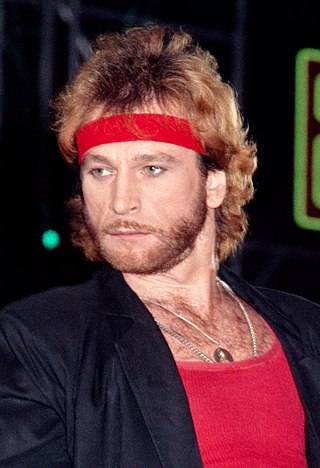
Igor Vladimirovich Talkov, was a Russian rock singer-songwriter and film actor. His breakthrough came in 1987 with the David Tukhmanov-composed song Clean Ponds which was an instant hit. Talkov's lyrics are mostly about love, but also contain social critique of the Soviet regime. He was shot dead in 1991.
37. Donskoy Monastery
Donskoy Monastery is a major monastery in Moscow, founded in 1591 in commemoration of Moscow's deliverance from the threat of an invasion by the Crimean Khan Kazy-Girey. Commanding a highway to the Crimea, the monastery was intended to defend southern approaches to the Moscow Kremlin.
38. И. В. Мичурину
Ivan Vladimirovich Michurin was a Russian practitioner of selection to produce new types of crop plants, Honorable Member of the Soviet Academy of Sciences, and academician of the Lenin All-Union Academy of Agriculture.
39. Людмила Пахомова
Lyudmila Alekseyevna Pakhomova was a Russian ice dancer who competed for the Soviet Union. With her husband Aleksandr Gorshkov, she was the 1976 Olympic champion, one of the oldest female figure skating Olympic champions.
40. Moscow Youth Theater
The MTYuZ Theater is a theater in the Tverskoy district of Moscow. Founded in 1920 as the First State Theater for Children, in 1941 it was merged with another Moscow Youth Theater. In 1970 he was awarded the Order of the Red Banner of Labor, and in 80 he received the Lenin Komsomol Prize.
41. GULAG History Museum
The State Museum of History of the Gulag is a museum in Moscow dedicated to the memory of the victims of communist repression, founded in 2001. The first permanent exhibition was located in the house on Petrovka, since 2015 the museum has been located in a building in the 1st Samotechny Lane.
42. В. Н. Леонов
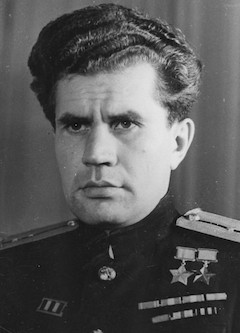
Viktor Nikolayevich Leonov was a Soviet Navy officer and twice Hero of the Soviet Union. Considered a national legend in the Soviet era after the Second World War, he frequently gave speeches to Communist organizations about the war, but he became obscure after the fall of the Soviet Union.
43. Московский музей анимации
The Moscow Animation Museum is the first international animation museum in Russia, opened in 2006 by the staff of the Soyuzmultfilm film studio. The collection of exhibits is associated with the history of the development of animation and animation in Russia and abroad. Currently, the main exposition is located on the territory of the Izmailovo Kremlin, and the museum also owns the pavilion of VDNH "House of Culture", closed for repairs until 2018. The founder is the animator Leonid Aronovich Shvartsman. The director of the museum is Larisa Evgenievna Vyborgova.
44. Лётчица Е.М.Руднева
Yevgeniya Maksimovna Rudneva was the head navigator of the 46th Guards Night Bomber Regiment posthumously awarded Hero of the Soviet Union. Prior to World War II she was an astronomer, the head of the Solar Department of the Moscow branch of the Astronomical-Geodesical Society of the USSR.
45. Государственный Биологический музей им. К.А. Тимирязева
The State Biological Museum of Imen K. A. Timiryazev in Moscow is a natural -nuclear museum founded on April 24, 1922 and located in the buildings of the former Schukin Museum at Malaya Georgian Street, house 15.
Wikipedia: Биологический музей имени К. А. Тимирязева (RU), Website
46. Содружество актёров Таганки
The Taganka Actors Ensemble is a Moscow drama and comedy theater that existed from 1993 to 2021. It was founded on April 22, 1993 by the decision of the Moscow City Council of People's Deputies. The theater troupe included 36 actors led by Nikolai Gubenko and part of the employees of the Taganka Theater of Yuri Lyubimov.
47. Ризположенская церковь
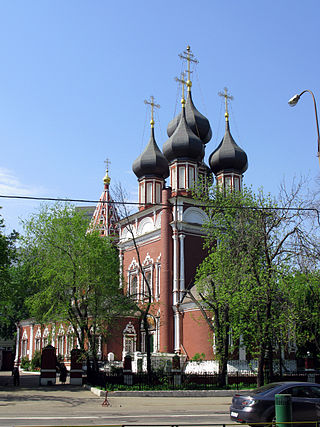
The Church of the Placing of the Lord's Robe in the Assumption Cathedral in Moscow on Donskoy is an Orthodox church in the Donskoy district of Moscow. It belongs to the Donskoy Deanery of the Moscow Diocese of the Russian Orthodox Church.
48. Danilov Monastery
Danilov Monastery is a walled monastery on the right bank of the Moskva River in Moscow. Since 1983, it has functioned as the headquarters of the Russian Orthodox church and the official residence of the Patriarch of Moscow and all Rus'.
49. Церковь Софии и Татьяны
The Church of the Holy Martyrs Sophia and Tatiana at the Filatov Children's Clinical Hospital No 13 is an Orthodox church in the Presnensky district of Moscow. It belongs to the Central Deanery of the Moscow Diocese of the Russian Orthodox Church.
50. М. А. Эсамбаев
Makhmud Ḣelasoltiyn voḣ Esambayev was a Soviet and Chechen dancer, ballet master, choreographer and actor. Makhmud was regarded as one of the most famous dancers of the Soviet Union. People's Artist of the USSR (1974) and Hero of Socialist Labour (1984).
51. Narkomfin Building
The Narkomfin Building is a block of flats at 25, Novinsky Boulevard, in the Central district of Moscow, Russia. Conceived as a "transitional type of experimental house", it is a renowned example of Constructivist architecture and avant-garde housing design.
52. North Tushino
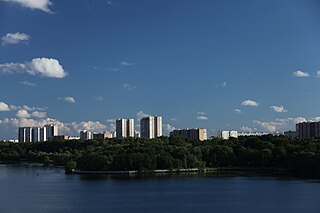
Severnoye Tushino Park is a park located on the territory of the Severnoye Tushino Municipal District in the north-west of Moscow between Svoboda Street and the Khimki Reservoir. The nearest metro stations are Skhodnenskaya and Planernaya. It was formed in 1992 on the site of the Zakharkovsky orchard, planted in the 1950s as a collective farm apple and pear orchard.
53. Леонид Филатов
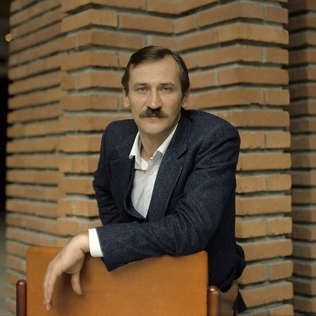
Leonid Alekseyevich Filatov was a Soviet and Russian actor, director, poet, pamphleteer, who shot to fame while a member of the troupe of the Taganka Theatre under director Yury Lyubimov. Despite severe illness that haunted him in the 1990s, he received many awards, including the Russian Federation State Prize and People's Artist of Russia in 1996.
54. Moscow Choral Synagogue
The Moscow Choral Synagogue is an Orthodox Jewish congregation and synagogue, located at 10 Bolshoy Spasogolinischevsky Lane, in the central Basmanny District of Moscow, Russia. It is the main synagogue in Russia and it is located close to Kitai-Gorod Metro station.
55. Theatre of Estrada
The Moscow State Variety Theater is a Moscow theater founded in 1954. Since 1961, it has been located in the Government House at 20/2 Bersenevskaya Embankment. The auditorium is designed for 1300 people. It hosted performances by pop artists, performances of both the theater itself and other troupes. Closed in 2020 for repairs, the theater is scheduled to open in 2022.
56. Подпольная типография 1905-1906 гг.
The Museum "Underground Printing House 1905-1906" is a historical museum in Moscow, a branch of the State Central Museum of Contemporary History of Russia. It was opened in 1924. It is a rare monument to the political history of Russia during the First Russian Revolution of 1905-1907, and is devoted mainly to the illegal activities of the RSDLP party during these years.
57. Михаил Глузский
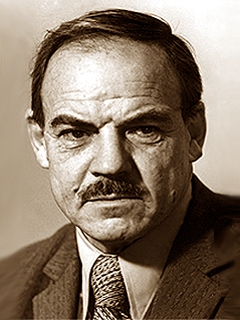
Mikhail Andreyevich Gluzsky was a Soviet and Russian theater and film actor. He starred in the 1972 film, Monologue, which was entered into the 1973 Cannes Film Festival. An actor in more than 130 films between his film debut 1939 and death in 2001, he was named a People's Artist of the USSR in 1983.
58. Чудов монастырь
The Chudov Monastery was founded in the Moscow Kremlin in 1358 by Metropolitan Alexius of Moscow. The monastery was dedicated to the miracle of the Archangel Michael at Chonae. The Monastery was closed in 1918 and dismantled in 1929 by the Soviet government.
59. Kremlin Clock
The Kremlin Clock or Kremlin Chimes, also known colloquially in the West as Moscow Clock Tower, is a historic clock on the Spasskaya Tower of Moscow Kremlin. The clock dial is above the main gates to Red Square. For decades, the chimes have rung on the quarter-hour, with bells tolling for each full hour.
60. Знаменский монастырь
The Znamensky Monastery in the Old Tsar's Court is a former monastery in Moscow. It was founded in 1629-1631. It was consecrated in the name of the Icon of the Mother of God "of the Sign". After 1923, the monastery was closed. The monastery cathedral has survived to this day. The buildings of the monastery are located at 8-10 Varvarka Street.
61. Церковь Троицы Живоначальной
The Church of the Life-Giving Trinity on Shabolovka is an Orthodox church in the Yakimanka district of Moscow. It belongs to the Moskvoretsky Deanery of the Moscow Diocese of the Russian Orthodox Church.
Wikipedia: Храм Троицы Живоначальной на Шаболовке (RU), Website
62. Sign of the Mother of God
The Church of the Icon of the Mother of God "Znamenie" on Sheremetev Dvor is an Orthodox church in the Arbat district of Moscow, erected as a house in the late XVII century in the style of Moscow Baroque on the territory of the estate of the boyar Lev Naryshkin.
Wikipedia: Церковь иконы Божией Матери «Знамение» на Шереметевом дворе (RU), Website
63. Chapaevsky Park
Chapaevsky Park is a small park in the Khoroshevsky District of the Northern Administrative District of Moscow. It is located near Leningradsky Prospekt at the intersection with Chapaevsky Lane. The area of the park is 6 hectares. Chapaevsky Park is a cultural heritage site of regional significance.
64. Memorial Museum of Astronautics
The Memorial Museum of Cosmonautics, also known as the Memorial Museum of Astronautics or Memorial Museum of Space Exploration, is a museum in Moscow, Russia, dedicated to space exploration. It is located within the base of the Monument to the Conquerors of Space in the north-east of the city. The museum contains a wide variety of Soviet and Russian space-related exhibits and models which explore the history of flight; astronomy; space exploration; space technology; and space in the arts. According to the Russian tourist board, the museum's collection holds approximately 85,000 different items and receives approximately 300,000 visitors yearly.
65. Н. А. Доллежалю
Nikolay Antonovich Dollezhal was a Russian engineer of Czech origin whose career was spent in the former Soviet program of nuclear weapons and later played an influential role in developing the commercial nuclear power industry of Russia.
66. Особняк С. П. Рябушинского
Ryabushinsky Mansion is a city estate built by architect Fyodor Schechtel for entrepreneur Stepan Ryabushinsky in 1900-1903. It is one of the most representative examples of early Art Nouveau in Russian architecture. Since 1965, the building has housed the Gorky Museum-Apartment.
67. Ступа преумножения счастья и добродетели
The Tower of Enlightenment of the Tubeden Shedubling Temple Complex is a religious building erected on the territory of the future Buddhist temple complex Tubden Shedubling in Moscow, which will be part of the Spiritual and Educational Complex of Russian Traditional Religions in Otradnoye. This is a capital three-level structure about 15 meters high, built for year-round, but episodic religious worship.
68. House on Taganka
The State Museum of Vladimir Vysotsky is a cultural and scientific center engaged in the collection, storage and study of materials reflecting the life and work of Vladimir Semyonovich Vysotsky, as well as the era in which he lived.
69. Храм святителя Николая в Кузнецкой Слободе
The Church of St. Nicholas in Kuznetskaya Sloboda is an Orthodox church in the Zamoskvorechye district of Moscow. It belongs to the Moskvoretsky Deanery of the Moscow Diocese of the Russian Orthodox Church. It is one of the few churches in the post-Soviet space that were not closed during the Soviet era.
70. Novosibirskiy Komsomolets Submarine
The B-396 Novosibirsk Komsomolets was a Soviet and Russian diesel-electric submarine of Project 641B Som, which served in the Northern Fleet from 1980 to 1998. Since July 26, 2006, it has been installed in the Navy Museum in the Severnoye Tushino Park on the shore of the Khimki Reservoir in Moscow.
71. Diamond Fund
The Diamond Fund is a unique collection of gems, jewelry and natural nuggets, which are stored and exhibited in the Kremlin Armoury in Russia. The Fund was opened in 1967 and its collection dates back to the Russian Crown treasury instituted by Emperor Peter I of Russia in 1719.
72. Храм Благовещения Пресвятой Богородицы
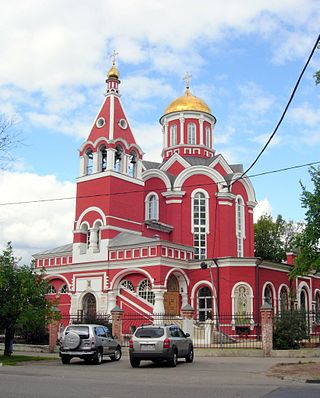
The Church of the Annunciation of the Most Holy Theotokos in Petrovsky Park is a parish church belonging to the All Saints Deanery of the Moscow City Diocese of the Russian Orthodox Church. Located at Krasnoarmeyskaya Street, 2.
Wikipedia: Храм Благовещения Пресвятой Богородицы в Петровском парке (RU)
73. К. А. Тимирязеву
Kliment Arkadievich Timiryazev, sometimes Timiriazev was a Russian botanist and physiologist and a major proponent of thought of Charles Darwin in Russia. He founded a faculty of plant physiology and a laboratory at the Petrovskoye Academy.
74. Церковь Святителя Николая Чудотворца На Берсеневке В Верхних Садовниках
The Church of St. Nikola on Bersenevka is a Edinoverie Orthodox church in the Yakimanka district of Moscow. It belongs to the Moskvoretsky Deanery of the Moscow Diocese of the Russian Orthodox Church. It is the architectural ensemble with chambers of Averky Kirillov.
75. Apartment Museum of Fyodor Dostoevsky
The Moscow House of Dostoevsky Museum Center is a memorial museum dedicated to the work of the writer Fyodor Dostoevsky. It is located in the former building of the Mariinsky Hospital, in the wing of which his family lived from 1821 to 1837. It was founded in 1928 as the Museum-Apartment of Fyodor Mikhailovich Dostoevsky, in 1940 it became part of the State Literary Museum. For 2018, the exhibition includes antique furniture, family photographs, as well as personal belongings of the Dostoevsky family.
76. Monument to Minin and Pozharsky
The Monument to Minin and Pozharsky is a bronze statue designed by Ivan Martos and located on the Red Square in Moscow, Russia, in front of Saint Basil's Cathedral. The statue commemorates two Russian national heroes Prince Dmitry Pozharsky and Kuzma Minin, who in 1612 organized a popular uprising that ultimately led to the end of the Polish occupation of Moscow during Polish intervention in Russia, thus putting an end to the Time of Troubles.
77. Храм Рождества Христова
The Church of the Nativity of Christ in Izmailovo is an Orthodox church in the Izmailovo district of Moscow. It is part of the Nativity Deanery of the Moscow Diocese of the Russian Orthodox Church. Architectural monument.
78. Museum of Moscow railway
The Museum of the Moscow Railway is situated next to Paveletsky Rail Terminal in Moscow. The museum reopened to private visitors in 2011 and it reopened to the general public in January 2012. It's the object of cultural heritage of Russia.
Wikipedia: Museum of the Moscow Railway (Paveletskaya station) (EN)
79. Georgy Zhukov
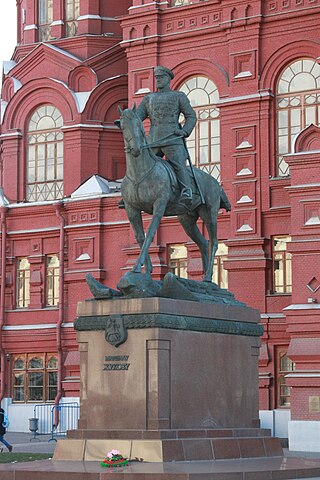
The monument to Mr. Zhükov is a sculptural monument to the Soviet commander Georgy Zhukov in Moscow. It was installed on May 8, 1995 on Manezhnaya Square in front of the Historical Museum. It was made by sculptor Vyacheslav Klykov together with architect Yuri Grigoriev in the spirit of socialist realism.
80. Церковь Троицы в Никитниках
The Church of the Holy Life-Giving Trinity in Nikitniki is an Orthodox church in the Tverskoy district of Moscow, the standard of Moscow uzoro of the mid-XVII century, built by Yaroslavl merchants in Kitay-gorod. This building is a milestone in the history of Russian architecture, it served as a model for many Moscow churches of the second half of the XVII century.
81. Храм Живоначальной Троицы в Воронцове
The Church of the Life-Giving Trinity in Vorontsov is an Orthodox church in the Obruchevsky District (South-Western Administrative District) of Moscow. It is located on the territory of Vorontsovsky Park. It belongs to the St. Andrew's Deanery of the Moscow Diocese of the Russian Orthodox Church.
82. Собор Покрова Пресвятой Богородицы
The temple of the Protection of the Blessed Virgin Mary in Izmailovo is an Orthodox church in the area of Izmailovo in the city of Moscow, on the island on the Silver-Vinograd pond. Refers to the Christmas deanery of the Moscow diocese.
83. А. П. Чехову
The monument to the student Chekhov on the territory of Moscow State University is a monument to the classic of Russian literature Anton Pavlovich Chekhov, created by the sculptor A. I. Rukavishnikov with the financial support of the Oleg Deripaska Volnoye Delo Foundation.
84. Церковь Покрова Пресвятой Богородицы
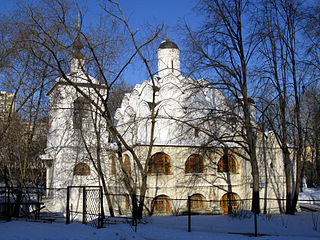
The Church of the Intercession of the Most Holy Theotokos in Rubtsovo is a Edinoverie Orthodox church in the Basmanny district of Moscow. It belongs to the Epiphany Deanery of the Moscow Diocese of the Russian Orthodox Church. The Patriarchal Center of the Old Russian Liturgical Tradition operates at the temple.
85. Cathedral of the Savior
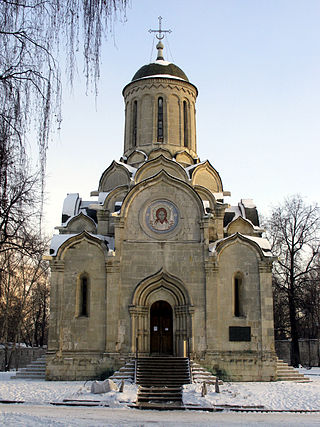
The Cathedral of the Savior of the Image Not Made by Hands is an Orthodox church in the Tagansky district of Moscow, in the former Spaso-Andronikov Monastery. A monument of early Moscow architecture. It was built in 1410-1427. It is the oldest surviving stone cathedral in Moscow.
86. Bunker 42 -Tagansky Protected Command Point
The Cold War Museum (Moscow) or Bunker GO-42, also known as "facility-02" (1947), CHZ-293 (1951), CHZ-572 (1953), and GO-42 (from 1980), and now Exhibition Complex Bunker-42, is a once-secret military complex, bunker, communication center in Moscow, Russia, near the underground Moscow Metro station Taganskaya. It has an area of 7,000 square metres (75,000 sq ft) and is situated at a depth of 65 metres (213 ft) below ground.
87. Gosplan Garage
Gosplan's Garage is a garage building on Aviamotornaya Street in Moscow, built in 1936. Designed by architect Konstantin Melnikov in collaboration with V. I. Kurochkin, it was intended for cars of employees of the USSR State Planning Committee. It is an architectural monument of the Soviet avant-garde, the round window should be associated with a headlight.
88. Terem Palace
Terem Palace or Teremnoy Palace is a historical building in the Moscow Kremlin, Russia, which used to be the main residence of the Russian czars in the 17th century. Its name is derived from the Greek word τέρεμνον. Currently, the structure is not accessible to the public, as it belongs to the official residence of the President of Russia.
89. Храм Михаила Архангела при клиниках на Девичьем поле
The Church of the Archangel Michael at the clinics on Devichye Pole is a parish Orthodox church in the Khamovniki district of Moscow. It is part of the Central Deanery of the Moscow Diocese of the Russian Orthodox Church. It was built in 1894-1897 on Devichye Pole at the University Clinics of the Medical Faculty of Moscow University.
Wikipedia: Храм Архангела Михаила при клиниках на Девичьем поле (RU)
90. П. И. Багратиону
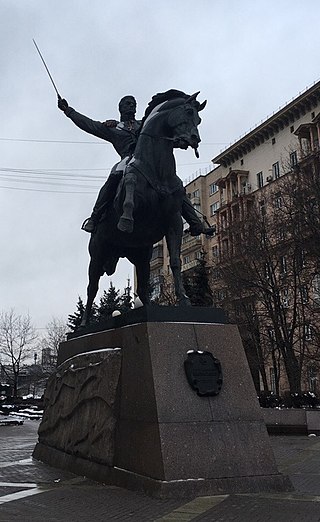
Memorial to Pyotr Ivanovich Bagration, a Russian general of infantry, prince, hero of the Patriotic War of 1812. The monument is located on the even side of Kutuzovsky Prospekt in the Bagration Square in front of the Tower-2000 business complex.
91. Храм Державной иконы Божией Матери
The Church of the Reigning Icon of the Mother of God is a wooden Orthodox church-chapel in Moscow, part of the complex of the Cathedral of Christ the Savior. It belongs to the Central Deanery of the Moscow Diocese.
92. Храм Николая Чудотворца в Толмачах
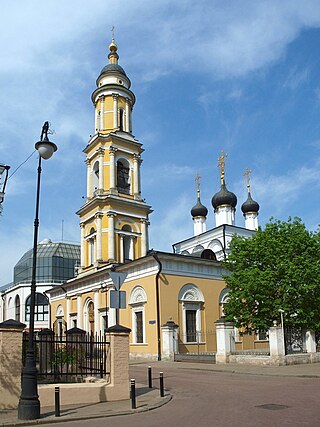
The Church of St. Nicholas in Tolmachi is both a Russian Orthodox house church and museum that is part of the State Tretyakov Gallery located in Moscow. The church is home to several religious relics and icons, including the culturally important Our Lady of Vladimir.
93. Церковь Святого Воскресения
The Church of the Holy Resurrection is a church of the Armenian Apostolic Church in Moscow. It is located at the Armenian cemetery, at the address - metro station "Ulitsa 1905 goda", Presnensky district, Sergey Makeev street, house 10.
94. Patriarch Hermogenes
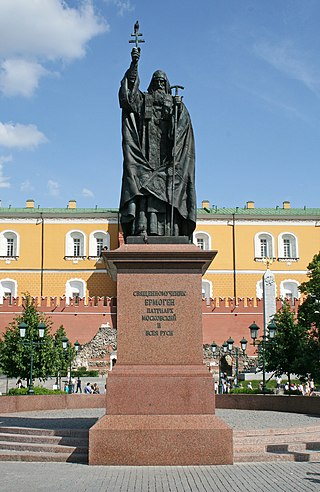
The Commemoration of Patriarch Germogen (Ermogen) is a bronze sculpture on a pedestal in the center of Moscow in memory of the second Patriarch of All Russia Germogen. It was installed and opened on May 25, 2013 in the Alexander Garden opposite the Middle Arsenal Tower of the Moscow Kremlin on the initiative of the Russian Orthodox Church and Patriarch Kirill of All Russia.
95. Дмитрию Донскому
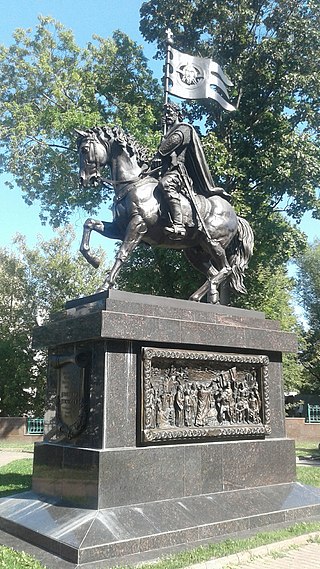
The Monument to Dmitry Donskoy is a bronze sculpture on a granite pedestal in the square at the intersection of Nikoloyamskaya and Yauzskaya streets in Moscow, installed in 2013 in honor of Prince Dmitry Donskoy. The author is sculptor Vyacheslav Klykov.
96. Ivan Fyodorov
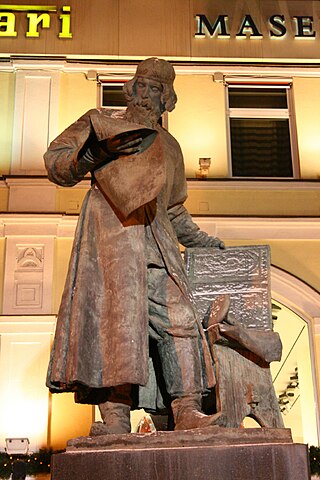
The Memorial to the First Poet Ivan Fyodorov is a Moscow sculptural monument to the creator of the first Russian dated printed book, Ivan Fyodorov. It was opened in 1909 in front of the Kitay-Gorod Wall, next to Tretyakov Passage. It was made by sculptor Sergey Volnukhin according to the project of architect Ivan Mashkov. The monument has been moved several times, since the 1990s it has been located near house No 2 on Teatralny Proyezd. The monument has been given the status of an object of cultural heritage of Russia.
Wikipedia: Памятник первопечатнику Ивану Фёдорову (Москва) (RU)
97. Храм Владимирской иконы Божией Матери
The Church of the Vladimir Icon of the Mother of God in Kurkino is a parish church of the Spassky Deanery of the Moscow City Diocese of the Russian Orthodox Church. It is located at Novogorskaya Street, 37.
Wikipedia: Храм Владимирской иконы Божией Матери в Куркине (RU), Vk, Facebook, Instagram, Website, Youtube
98. Wall of Grief
The Wall of Grief is a monument in Moscow to the victims of political persecution by Joseph Stalin during the country's Soviet era. The national memorial was unveiled by Russian President Vladimir Putin and Patriarch Kirill of Moscow on October 30, 2017, the annual Day of Remembrance of the Victims of Political Repressions.
99. Собор Петра, митрополита Московского
The Cathedral of St. Peter, Metropolitan of Moscow is an Orthodox church in the Tverskoy district of Moscow, the cathedral of the Vysoko-Petrovsky Monastery. The first example of a centric multi-petal church in Russian architecture.
Wikipedia: Собор Петра Митрополита (Высоко-Петровский монастырь) (RU)
100. Музей славянской культуры им. Константина Васильева
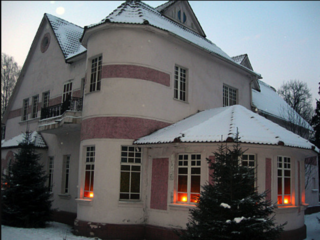
The Museum of Slavic Culture named after Konstantin Vasiliev is an art museum of the Russian artist of the XX century Konstantin Vasiliev, located in the north of Moscow in the Lianozovo district. The museum was established in 1998 on the initiative of members of the "Konstantin Vasiliev Painting Lovers Club" chaired by Anatoly Doronin.
Share
How likely are you to recommend us?
Disclaimer Please be aware of your surroundings and do not enter private property. We are not liable for any damages that occur during the tours.
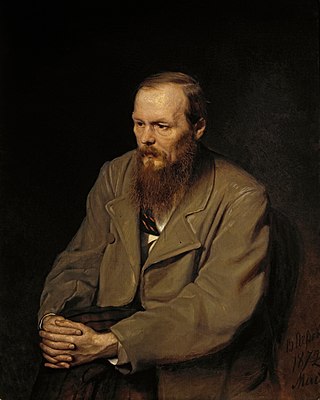
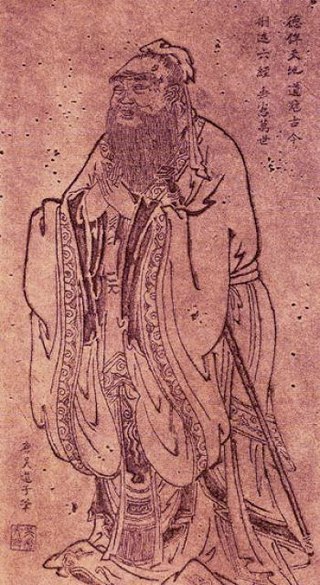
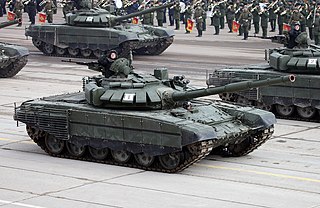
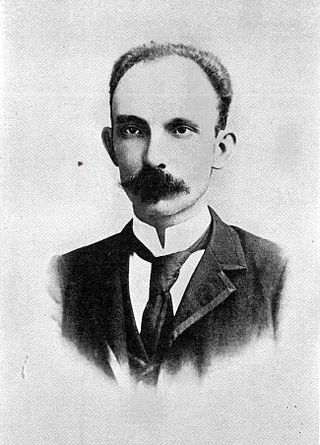
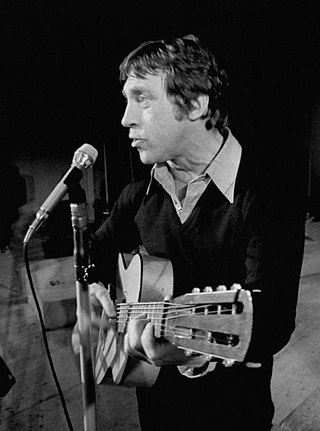
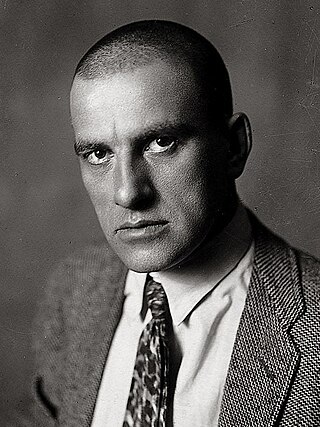
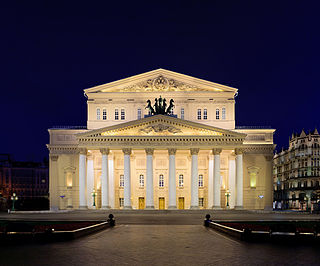
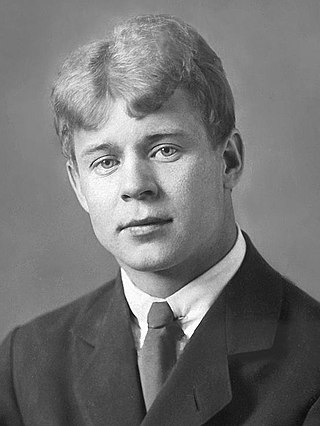
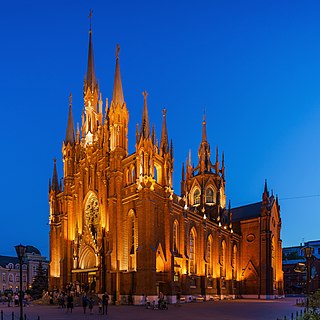
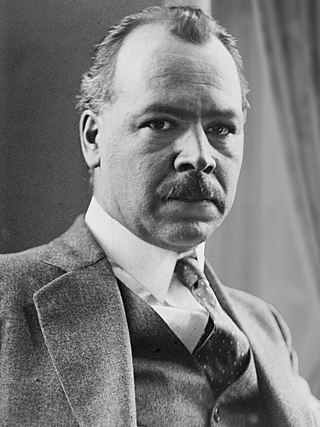
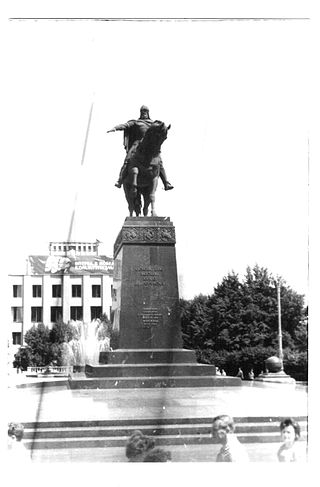

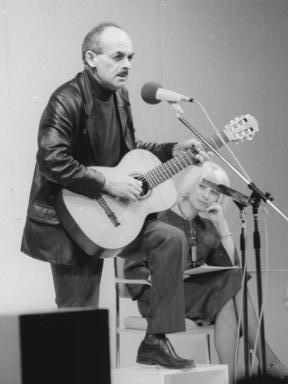
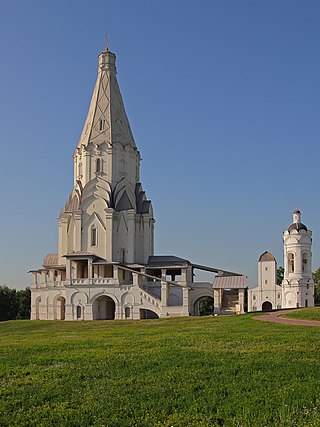
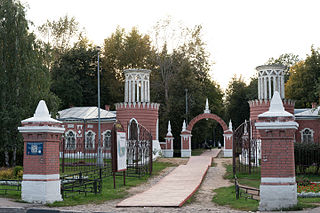
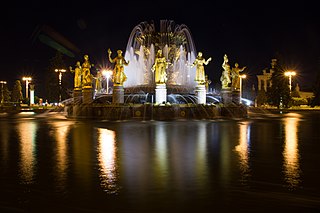
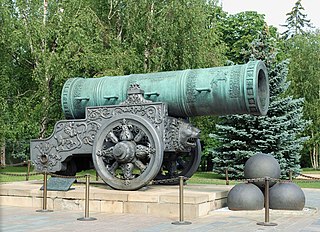
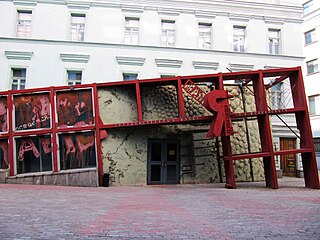
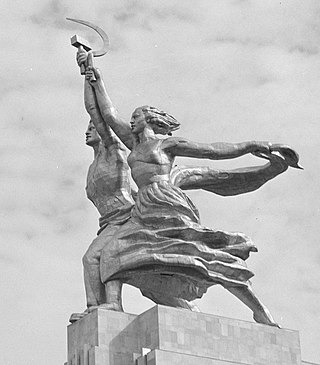
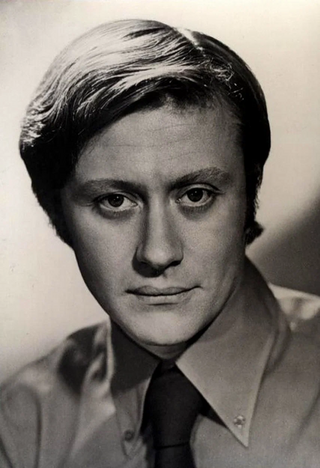
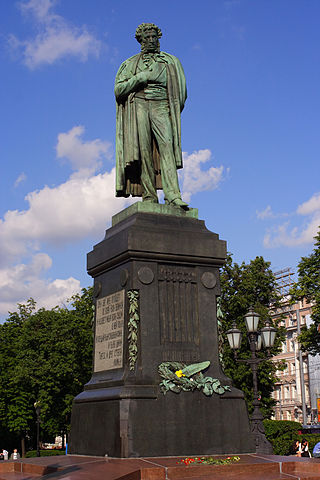
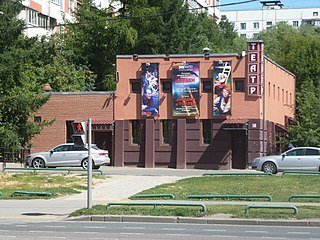
.jpg)
